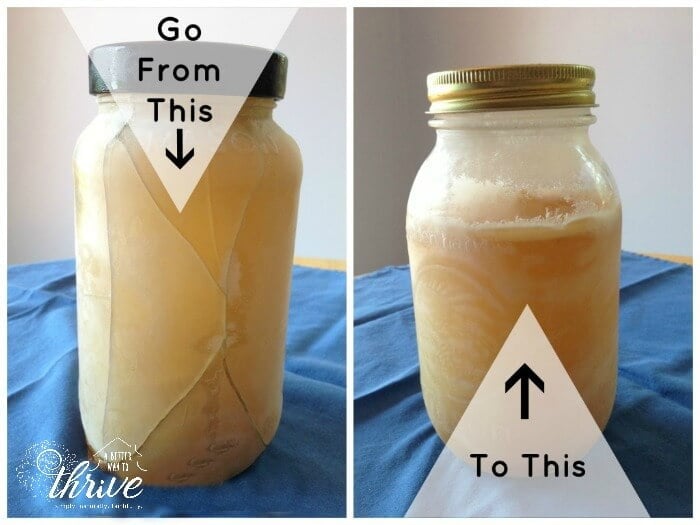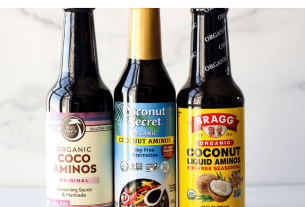Imagine this: You open your freezer, searching for something delicious to satisfy your hunger.
And there it is, a gorgeously crafted glass container filled with frozen goodness.
But wait, can you actually put glass in the freezer?
Well, get ready to be amazed, because glass containers are not only durable and versatile, but also safe to use for freezing food.
In fact, they are resistant to odors and stains, can be used in various appliances, and do not absorb bacteria like their plastic counterparts do.
So how do you choose the right glass container and handle it with care?
Let’s dive into this freezing adventure together and discover the wonders of freezing with glass.
can you put glass in the freezer
Yes, glass can be put in the freezer.
Glass containers are a good choice for freezing food because they are odor and stain resistant, can go in the microwave, oven, and dishwasher, and are not porous like plastic.
It is important to use glass containers that are labeled as freezer safe and to avoid using containers with cracks or damage.
Cooling food before freezing can prevent thermal shock and bacterial growth.
Glass containers with silicone-lined lids provide an airtight seal and prevent freezer burn.
Wide-mouth, straight-sided mason jars can also be used for freezing, but it is important to leave space at the top of the jars to allow for expansion.
When taking glass containers out of the freezer, they should be slowly warmed to avoid thermal shock, which can cause the glass to crack or shatter.
Overall, glass is a durable and versatile material for freezing food.
Key Points:
- Glass containers are a good choice for freezing food as they are odor and stain resistant.
- Glass containers can go in the microwave, oven, and dishwasher.
- To freeze food in glass containers, it is important to use ones that are labeled freezer safe and avoid using damaged containers.
- Cooling food before freezing prevents thermal shock and bacterial growth.
- Glass containers with silicone-lined lids prevent freezer burn.
- Wide-mouth mason jars can also be used, but leave space for expansion and slowly warm them when taking out of the freezer to avoid shattering.
can you put glass in the freezer – Watch Video


Pro Tips:
1. Freezing glass can cause it to crack or shatter due to the extreme temperature difference. However, there are specific types of glass, such as borosilicate glass, that have a higher resistance to thermal shock and can be safely placed in the freezer.
2. The concept of freezing glass as a preservation method dates back to ancient times. The Romans used to freeze glass bottles filled with various liquids, believing that this would help them last longer.
3. Ever wondered why ice cubes often have a cloudy appearance? This is because freezing water traps tiny air bubbles within the ice. Similarly, when you place glass in the freezer, any moisture present on its surface can turn into ice, creating a frosty look.
4. Despite the risks associated with freezing glass, some bartenders actually use chilled glassware to serve certain beverages. This technique is particularly common for drinks like martinis or beer, as the chilled glass helps keep the drinks colder for longer.
5. When dealing with extremely cold temperatures, it’s not uncommon for glasses to stick to frozen surfaces. This phenomenon, known as “cold welding,” occurs when two clean, flat surfaces of glass come into contact and effectively bond together due to molecular forces. So, be cautious when placing a glass in the freezer, as it may end up sticking to the frozen shelf or surface.
Glass Containers Are A Good Choice For Freezing Food
Glass containers are an essential kitchen item due to their versatility and visual appeal. However, their utility extends beyond aesthetics. Glass containers are an excellent choice for freezing food, offering both safety and reliability in food storage.
The advantages of using glass containers for freezing food are as follows:
-
Temperature resistance: Unlike plastic and other materials, glass containers can withstand extreme temperatures. This quality allows them to transition seamlessly from the freezer to the oven or microwave, without compromising the safety or quality of the food. Consequently, reheating frozen leftovers becomes hassle-free as there is no need to transfer them to a different container.
-
Ease of cleaning: Another noteworthy advantage of glass containers is their dishwasher-safe feature. Cleaning them is a breeze, as they can be conveniently placed in the dishwasher without worry of damage.
In conclusion, glass containers are an ideal option for freezing food. With their ability to tolerate extreme temperatures and dishwasher-safe properties, they ensure that your food remains fresh and of high quality during freezing and subsequent reheating.
To summarize the benefits of using glass containers for freezing food:
- Temperature resistance allows for easy transition from freezer to oven/microwave.
- Dishwasher-safe feature ensures effortless cleaning.
“Glass containers provide a safe and reliable method for storing food in the freezer, keeping it fresh and maintaining its quality.”
Glass Containers Are Odor And Stain Resistant
Another great feature of glass containers is their resistance to odors and stains. Unlike plastic containers that can retain odors even after thorough cleaning, glass containers remain odor-free, ensuring that your food will taste fresh and delicious every time you take it out of the freezer. Additionally, glass containers are stain-resistant, meaning that they won’t get discolored or absorb any residual colors or flavors from the food you store in them.
Glass Containers Can Go In The Microwave, Oven, And Dishwasher
One of the biggest advantages of using glass containers for freezing food is their versatility in the kitchen. Unlike plastic containers that can melt or release harmful chemicals when exposed to high temperatures, glass containers are completely safe to use in the microwave, oven, and dishwasher. This makes them a convenient choice for reheating or cooking food straight from the freezer, as you can simply transfer the glass container from one appliance to another without any worries.
Glass Containers Are Not Porous Like Plastic
Glass containers are non-porous, unlike plastic, which means that they do not absorb or retain food flavors, odors, or stains. This makes them an ideal choice for freezing food as it helps to preserve the taste and quality of your meals. Additionally, the non-porous nature of glass containers prevents the growth of bacteria, further ensuring the safety and freshness of your frozen food.
Glass Containers Should Be Durable And Labeled As Freezer Safe
When choosing glass containers for freezing food, it is essential to look for containers that are durable and labeled as freezer safe. Freezing food puts containers under extreme stress due to the expansion of water molecules. Therefore, it is crucial to choose glass containers that are specifically designed and tested to withstand these conditions. Look for containers that have been labeled as freezer safe to ensure that they can handle the temperature fluctuations without cracking or shattering.
- Choose glass containers that are durable and labeled as freezer safe
- Freezing food can cause containers to undergo extreme stress due to the expansion of water molecules
- Glass containers should be specifically designed and tested to withstand freezing conditions
- Look for containers labeled as freezer safe to ensure they won’t crack or shatter.
Cooling Food Before Freezing Can Prevent Thermal Shock And Bacterial Growth
To ensure the best quality and safety of your frozen food, it is recommended to cool it down before placing it in the freezer. Rapid temperature changes can lead to thermal shock, which can cause glass containers to crack or shatter. By allowing your food to cool down to room temperature, you can prevent this risk and ensure the longevity of your glass containers.
Cooling food before freezing also helps to prevent bacterial growth. Warm food can create a favorable environment for bacteria to thrive, which is why it is essential to let your food cool down before storing it in the freezer. By doing so, you can maintain the quality and safety of your food for an extended period.
Glass Containers With Silicone-Lined Lids Provide An Airtight Seal And Prevent Freezer Burn
To ensure the best preservation of your frozen food, consider using glass containers with silicone-lined lids. The silicone lining provides an airtight seal, preventing any air from entering the container and causing freezer burn.
Freezer burn occurs when moisture in the food evaporates, leaving behind dry and discolored patches. By using glass containers with silicone-lined lids, you can prevent freezer burn and maintain the quality and freshness of your food.
Wide-Mouth, Straight-Sided Mason Jars Can Be Used For Freezing
In addition to traditional glass containers, wide-mouth, straight-sided mason jars can also be used for freezing food. Mason jars are incredibly versatile and can be easily found in most households. Their design makes them suitable for a variety of purposes, including freezing. The straight sides of mason jars allow for efficient freezing and easy removal of the frozen content when needed. However, it’s important to note that you should always leave enough space at the top of the jar to allow for expansion.
- Wide-mouth, straight-sided mason jars
- Versatile and commonly found in households
- Suitable for a variety of purposes, including freezing
- Efficient freezing and easy removal of frozen content
- Leave enough space at the top for expansion
Leave Space At The Top Of Mason Jars To Allow For Expansion
When using mason jars for freezing, it is crucial to leave at least one inch of headspace at the top. Freezing causes liquids to expand, and if the jar is too full, the glass jar may crack or break. By providing enough space, you can prevent any unfortunate mishaps from happening. This allowance permits the natural expansion of the food as it turns into ice.
- Leave at least one inch of headspace at the top of the mason jar for freezing.
- Insufficient headspace may lead to cracking or breaking of the glass jar.
Avoid Using Glass Containers With Cracks Or Damage
While glass containers are generally durable and long-lasting, it is essential to avoid using containers with cracks or damage when freezing food. Cracks or damage in glass containers can compromise their structural integrity, making them more prone to breaking or shattering when exposed to extreme temperatures. Before freezing, carefully inspect your glass containers for any signs of cracks or damage. Using containers in good condition will ensure the safety of your food and prevent any potential accidents.
Glass containers are an excellent choice for freezing food. Their versatility, durability, and ability to withstand extreme temperatures make them a preferred option for many households. Glass containers provide odor and stain resistance, are non-porous, and can go in the microwave, oven, and dishwasher. It is important to select glass containers that are labeled as freezer safe and to cool food before freezing to prevent thermal shock and bacterial growth. Using glass containers with silicone-lined lids or wide-mouth, straight-sided mason jars can further enhance the quality and preservation of your frozen food. However, it is crucial to avoid using containers with cracks or damage and to leave enough space at the top of the jar to allow for expansion. By following these guidelines, you can safely and effectively freeze your food using glass containers.

You may need to know these questions about can you put glass in the freezer
1. Is it safe to place glass in the freezer?
Yes, it is generally safe to place glass in the freezer. Glass is known for its ability to withstand freezing temperatures, so it will not crack or shatter when placed in the freezer. However, it is important to ensure that the glass is suitable for freezing and that it is not filled to the brim to allow for expansion. Additionally, it is advisable to let the glass cool down or bring it to room temperature before transferring it directly into the freezer to prevent thermal shock.
Some precautions should be taken when placing glass in the freezer to minimize the risk of breakage. It is recommended to use freezer-safe glass containers that are specifically designed to withstand low temperatures. Also, avoid sudden temperature changes by placing the glass in the refrigerator first and gradually lowering the temperature. Finally, make sure the glass is not filled to the top to allow for expansion as liquids freeze and expand. By following these guidelines, it is safe to freeze glass containers without the risk of them cracking or shattering.
2. What precautions should be taken when freezing glass containers?
When freezing glass containers, it is important to take certain precautions to avoid breakage and potential harm. Firstly, always ensure that the glass containers being used are freezer-safe and designed to withstand freezing temperatures. Not all glass containers are suitable for freezing as they can shatter due to the expansion of the liquid inside as it freezes.
Additionally, when freezing glass containers, it is crucial to leave some headspace at the top to allow for expansion. As the liquid freezes, it expands, and without enough space, the glass container may burst. It is also a good idea to place the glass containers in the freezer in a way that minimizes movement and potential contact with other objects. This can help prevent any accidental knocks or jostles that might cause the glass to break. By following these precautions, one can safely freeze glass containers.
3. Can glass withstand the rapid temperature changes in the freezer?
Glass can generally withstand rapid temperature changes in the freezer. However, there is a risk of glass breaking due to thermal shock. When exposed to extreme temperature variations, such as going from a hot oven to a cold freezer, glass may expand or contract quickly, causing it to crack or shatter. Therefore, it is advisable to use tempered glass or glassware specifically designed for freezing to minimize the risk of breakage and ensure safe storage in the freezer.
4. Are there specific types of glassware that are freezer-friendly?
Yes, there are certain types of glassware that are freezer-friendly. One such type is borosilicate glass, which is known for its ability to withstand extreme temperature changes. Borosilicate glassware is resistant to thermal shock, making it safe to use in the freezer without fear of shattering or cracking. It is often used for storage containers or baking dishes that can be safely transferred from the freezer directly into the oven.
Another type of freezer-friendly glassware is tempered glass. Tempered glass is produced through a process of controlled heating and cooling, resulting in a stronger and more durable material. It is less likely to break or chip when exposed to extreme temperatures, including the freezer. Tempered glassware is commonly used for food storage containers or mixing bowls that can be placed in the freezer without any issues.
Reference source
https://food52.com/blog/26569-how-to-freeze-food-properly
https://www.biome.com.au/blogs/eco-home/freezing-food-in-glass
https://www.rd.com/article/can-you-put-glass-in-the-freezer/
https://www.quora.com/Will-glass-break-if-you-put-it-in-the-freezer



